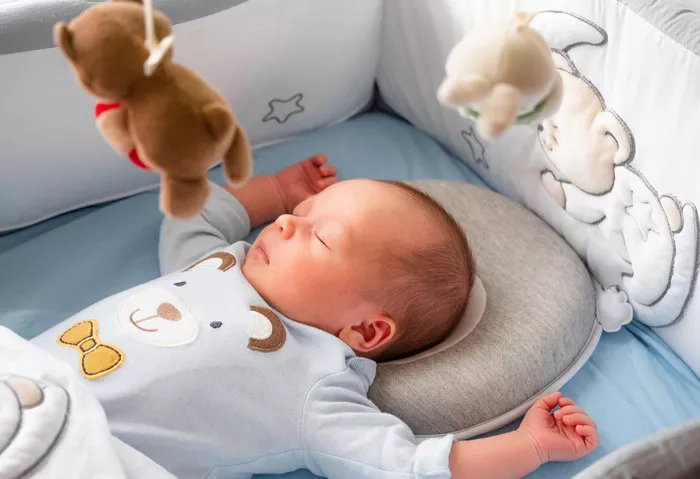Welcoming a newborn into the family is an exciting and joyous occasion, filled with anticipation and preparation. Among the myriad of considerations for new parents is ensuring the safety and comfort of their little one, particularly during sleep. One common question that arises is whether newborns can safely use pillows. In this article, we will delve into the topic, examining the safety guidelines, potential risks, and the necessity of pillows for newborns.
Understanding Newborn Sleep Needs:
Before delving into the question of whether newborns can use pillows, it’s essential to understand their sleep needs. Newborns spend a significant portion of their time sleeping, typically around 16 to 17 hours a day in the first few weeks of life, gradually decreasing to about 14 to 15 hours by the time they reach three months old. During these early months, infants cycle through periods of active sleep and quiet sleep, with shorter sleep cycles compared to adults.
The American Academy of Pediatrics (AAP) recommends placing infants on their backs to sleep to reduce the risk of sudden infant death syndrome (SIDS), a leading cause of death among infants under one year of age. This sleep position has been shown to significantly decrease the incidence of SIDS since the AAP introduced the Back to Sleep campaign in 1994. Additionally, the sleep environment should be free of loose bedding, pillows, stuffed animals, and other potential suffocation hazards.
Safety Guidelines for Infant Sleep:
Given the AAP’s guidelines on safe sleep practices for infants, it’s clear that pillows are not recommended for newborns. Here are several reasons why pillows pose a risk to infants:
Risk of Suffocation: Pillows, particularly those with plush or fluffy surfaces, can pose a suffocation hazard to newborns. Infants lack the motor skills and strength to move their heads away from obstructions, increasing the risk of suffocation if their face becomes pressed against a pillow during sleep.
Overheating: Pillows can contribute to overheating in newborns, as they may trap heat close to the infant’s body. Overheating is a risk factor for SIDS and should be avoided by maintaining a comfortable and consistent room temperature and dressing the infant in appropriate sleep attire.
Neck Strain: Newborns have delicate neck muscles and limited head control. Placing a pillow under their head can cause strain on their neck muscles, potentially leading to discomfort or even injury.
Positional Asphyxia: Positional asphyxia can occur when an infant’s sleeping position restricts their ability to breathe adequately. Pillows may inadvertently contribute to positional asphyxia if they cause the infant’s head to be positioned in a way that obstructs their airway.
Given these safety concerns, it is recommended to adhere to the AAP’s guidelines and refrain from using pillows in the sleep environment of newborns.
Do Newborns Need Pillows?
While pillows are not recommended for newborns due to safety concerns, some parents may wonder if pillows are necessary for their infant’s comfort or to prevent flat head syndrome (positional plagiocephaly). Flat head syndrome occurs when an infant’s head develops a flat spot due to prolonged pressure on one area of the skull. However, pillows are not necessary for preventing flat head syndrome in newborns.
See Also: When to Bathe Newborn with Soap: A Comprehensive Guide
Instead, parents can take the following steps to reduce the risk of flat head syndrome:
Tummy Time: Encouraging supervised tummy time while the infant is awake and alert can help strengthen neck muscles and prevent flat spots on the head.
Alternate Head Position: When placing the infant down to sleep, alternate the direction in which their head faces each time to prevent prolonged pressure on one area of the skull.
Use of Firm Mattress: Ensure that the infant’s sleep surface is firm and flat, as recommended by the AAP. Avoid using soft bedding, including pillows, to reduce the risk of suffocation and positional asphyxia.
Repositioning During Sleep: If you notice your infant consistently sleeping with their head turned to one side, gently reposition their head to the opposite side to distribute pressure evenly.
By implementing these strategies, parents can promote healthy skull development and reduce the risk of flat head syndrome without the need for pillows.
Conclusion:
In conclusion, newborns should not use pillows during sleep due to safety concerns, including the risk of suffocation, overheating, neck strain, and positional asphyxia. The American Academy of Pediatrics recommends placing infants on their backs to sleep on a firm, flat surface free of loose bedding, pillows, and other potential hazards. While pillows are not necessary for newborns, parents can take proactive steps to promote healthy sleep habits and reduce the risk of flat head syndrome without the use of pillows. By prioritizing safe sleep practices and following guidelines from pediatric experts, parents can create a safe and comfortable sleep environment for their newborns.


